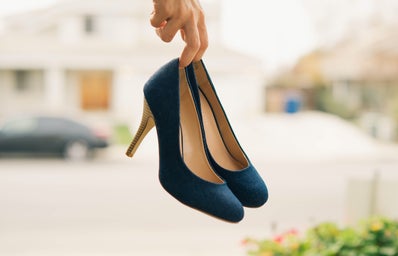Feminine. What comes to mind when you read that word? What does it even mean? Does it remind you of fragility and beauty? Or gentility and softness and modesty? What about compassion? Mildness? Sensitivity?
It was recently revealed that Jaden Smith, at 17 years old, will be the new face of Louis Vuitton womenswear for SS16. In the promo video for the campaign he can be seen alongside female models, clad in a skirt and leather jacket, as the words “lovely” and “beautiful” are breathed overtop the montage. Some may argue that a man modelling for a womenswear collection is huge step forward in challenging social norms and promoting gender presentation non-conformation. But the campaign, which is being labelled as an ‘expression of art, has planted a seed of doubt in some people’s minds about where the heart of this project comes from.
Now, as a cisgender and straight white girl, I need make a slight disclaimer and remind you to take this article with a pinch of salt. I have no idea what it’s like to come to terms with not identifying with what society wants you to, and so I can only give my views as an outsider. It’s a struggle I will never know, but equally it’s a battle that I am eager to help fight to support the LGBTQ+ community.
Jaden himself has previously been in headlines for dressing in skirts, donning nail varnish, and even (shock horror) wearing a dress to his prom. However, what people need to remember is this is not a new phenomenon by any means. Men in the celebrity limelight have been deliberately wearing women’s clothing for a long while now – with stars like rapper A$AP Rocky and the late David Bowie often taking inspiration from womenswear in their outfits. But whilst floral shirts and pink colour schemes (typically “feminine” designs) are permissible by our society’s standards, a man stepping out in a skirt or a dress sets alarm bells ringing. And yet, stars like Kourtney Kardashian often appear on the red carpet in menswear pant suits. Where is the line between what we class as cool, quirky and experimental, and what is simply too feminine for a male to wear? Why is that line there in the first place? More importantly, what does that say about how society views the female image? That it’s somehow embarrassing for a man to wear women’s clothes – that it makes him less masculine or a ‘sissy’.
Jaden (who identifies as male, as far as we are aware) describes the clothes he wears as merely ‘clothes’, not women’s clothes. Indeed, some could argue that a more progressive approach would have been to hire an actual transgender individual who identifies as a woman to be in the campaign. However, it’s important to remember that just because someone chooses to wear clothes that are traditionally designed for women, it doesn’t mean that they identify as female. After all, the stigma and roles attached to clothes are all social constructs.
A question I can’t help but ask is: shouldn’t fashion be the an area without boundaries and rules? After all, it’s one of the most creative industries there is. Indeed, designers often push the boundaries of traditionally accepted norms – putting male models in heels on the runway and feminine menswear in general is prominent in the mainstream at the moment (think 1D star Harry Styles in floral Gucci suits as well as wearing women’s jeans). Bringing this into the spotlight could be a brilliant method of changing how we look at binary fashion.
The level of confidence that Jaden Smith has in defying social norms is pretty applaudable in itself. The stigma that tags along with a man in a dress is a heavy burden to carry, and whilst Jaden himself is young and probably still working things out for himself, nobody should be discouraged from expressing themselves. Everyone should have the right to freely express who they are – and the same level of respect should be maintained whether it’s in a high-fashion campaign or just choosing an outfit to wear to work. Perhaps the fact that Jaden has the freedom to decide what he steps out in is a privilege that not everyone gets, but I also feel that him doing so opens up the conversation about gender norms. I want men to feel free and happy to embrace their feminine feelings and feminine expressions of self. I so want that to be a thing. Whether it be in a direct or an indirect way, Jaden could be said to be channelling LGBTQ+ themes simply by embracing who he is. In the end, it all boils down to acceptance, equality and appreciation for others’ true selves. I want to live in a world where when we hear the word feminine, we think of the words strong, dominant, and successful. Equally, I want our society to see masculine to be synonymous for caring, for gentle, for sensitive and vulnerable. I want this campaign to open up these words and to open up people’s minds so that compassion can override society’s norms. I don’t want a dress to make people see less of a person. I can’t say for definite whether this is a step forward for LGBTQ+ community per se, but in the words of Jaden’s wise father Will Smith, if we lead with love and light, only good can come of it.
Edited by Sarah Holmes
Image sources:
http://www.eonline.com/news/645151/here-s-jaden-smith-wearing-an-actual-dress
http://www.collectorsweekly.com/articles/style-gone-wild-in-the-1970s/
http://www.qwearfashion.com/home/2015/10/23/harry-styles-why-masculinity-doesnt-make-the-man

